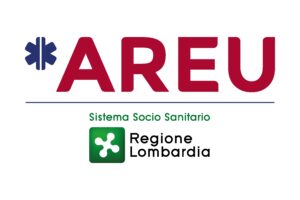Affiliate Organizations
WADEM created affiliate memberships for institutions and organizations that share an abiding interest and mission in advancing disaster and emergency health care to their membership, faculty, staff, etc. WADEM created this “affiliation” option to membership to help foster international collaboration and research with like-minded institutions and organizations.
Learn more about WADEM Affiliate Membership.
Are you a member of a WADEM Affiliate Organization? Please visit the Affiliate Membership Discount page.

Agenzia Regionale Emergenza Urgenza (AREU) was established as the Regional Emergency Urgency Company of the Lombardy Region in late 2007 and officially activated on 2 April 2008. On 1 January 2021, it transitioned into an Agency, inheriting all legal responsibilities and relationships previously held by the company. Operating across the entire Lombardy region (23,844 square km) and serving a population of
approximately 10 million. The Lombardy region serves as a model for emergency health care system prototyping for the country.
AREU has, over its first 15 years, developed a unified, efficient, and effective regional emergency health care system. This system is organized to standardize response and performance across the region, with strong integration with healthcare and social care entities to ensure continuous, consistent support for all residents.
It collaborates with the civil protection system to manage major emergencies, promotes scientific research and activities in partnership with other healthcare facilities, and fulfills additional responsibilities assigned by the Regional Council. Additionally, through its Training Structure and IR&Tec Center, AREU develops training strategies to uniformly and specifically enhance the qualifications of extra-hospital emergency activities. The Agency offers targeted training and refresher courses for all professionals involved in its operations.

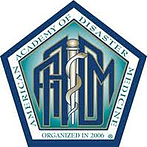
The American Academy of Disaster Medicine (AADM) exists to educate healthcare professionals and allied disciplines (e.g., anthropologists, urban planners, chaplains) in disaster and global health preparedness and response. AADM works with multiple organizations to define disaster medicine as a discrete, interdisciplinary specialty and to develop foundations of knowledge, core capabilities, and professional standards – creating a Disaster Medicine Learning Community that promotes community health resilience. Disaster medicine certification reinforces to international, federal, state, and local officials that disaster certified professionals are qualified to contribute to relief and recovery during times of a crisis.


The BIDMC Fellowship in Disaster Medicine, an affiliated fellowship of the Harvard Humanitarian Initiative at Harvard University, is designed to provide qualified fellows the opportunity to develop expertise in the related fields of Disaster Medicine (DM) and Emergency Management (EM).
Through extensive domestic and global rotations, fellows experience the practice of these disciplines in real-life, in addition to learning them in the classroom. With related offerings in Crisis Leadership, Counter-Terrorism Medicine, International EMS Disaster Operations, and Disaster Nursing, the BIDMC Fellowship in Disaster Medicine provides a comprehensive educational experience.

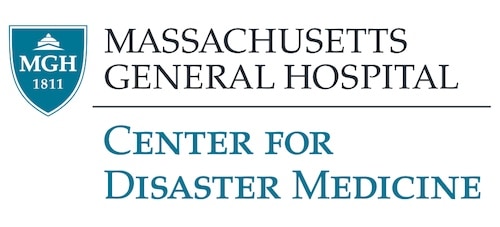
A division within the Massachusetts General Hospital (MGH) Department of Emergency Medicine, the Center for Disaster Medicine (CDM) oversees all preparedness and emergency management efforts at MGH. The mission of the MGH CDM is to improve health system emergency preparedness, response, and recovery through comprehensive programs that successfully prepare for, mitigate against, respond to, and recover from disaster events.

The Centre for Disaster Medicine is a knowledge hub commissioned by the Swedish National Board of Health and Welfare with a focus on medical care in total defense. The centre conducts research, development, and education within the whole spectrum of disaster medicine and healthcare in times of crisis and war.
Research on some of society's greatest challenges converge at the centre; preventive efforts in climate-related disasters, healthcare in crisis and war, accidents leading to the spread of chemical, biological, or radiological agents, pandemics, mass casualty management, and disaster medical command and control.

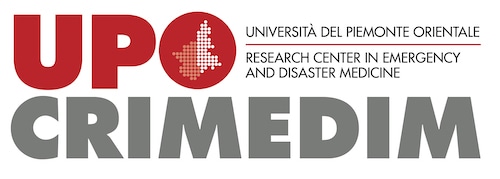
CRIMEDIM is a university-wide academic center that conducts research, education, and training in the field of disaster medicine and humanitarian health. The center is committed to promote innovative research projects and to foster learning and training programs using state of the art technologies to enhance the resilience of health systems in emergency, disaster, and humanitarian crises.

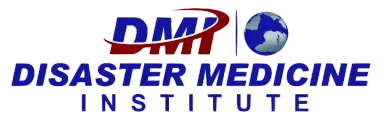
The mission of the Disaster Medicine Institute (DMI) is to strengthen health system readiness for disasters and complex emergencies through education and training. The initial hours to days of a disaster, when most of the preventable deaths occur, are almost entirely dependent on local resources. While building acute-phase response capabilities greatly enhances community resiliency, education related to mitigation, preparedness, and response is a crucial area often not fully addressed in disaster planning. This education does not only involve traditional first responders but rather must reach all levels of health care providers.
The Disaster Medicine Institute is an online educational institution dedicated to training healthcare professionals, emergency responders, and community leaders in the science and practice of disaster medicine. Offering a dynamic, expertly crafted curriculum, DMI prepares learners to handle medical crises, and manage large-scale disaster response. Additionally, DMI prepares individuals for the International Board of Disaster Medicine (IBODM) certification exam, equipping them with the knowledge and skills needed to achieve this important credential. The Disaster Medicine Institute’s mission is to provide accessible, high-quality education that empowers healthcare professionals to respond effectively in times of crisis, mitigate risks, and enhance public health and safety. Through cutting edge instruction by leading experts in the field, DMI bridges theory with practical application, making advanced disaster response training attainable to healthcare providers and crisis responders worldwide.

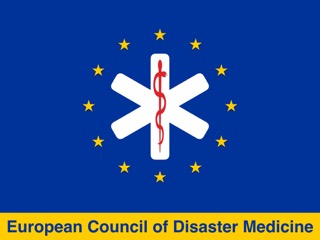
The European Council of Disaster Medicine was established to support interest in disaster medicine in Europe, particularly in countries where the discipline is not developed; to encourage multidisciplinary research, education, and training in disaster medicine; and to provide a platform for multidisciplinary exchange of ideas and knowledge in Europe.


Health Emergency Management BC (HEMBC) is a program of the Provincial Health Services Authority (PHSA) which provides emergency management leadership and support to the BC health system, including all regional health authorities, PHSA and the Ministry of Health. At its core, HEMBC is working to create a more resilient health-care system that can effectively mitigate, prepare for, respond to, and recover from the impacts of emergency events. HEMBC works with its partners to ensure the safety of patients and staff and the continuity of health services during emergencies.

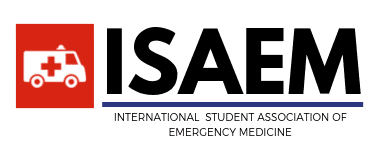
The International Student Association of Emergency Medicine (ISAEM) is a not-for-profit student organization that aims to support international collaboration, cooperation and knowledge dissemination in emergency medicine (EM) among medical students, globally. By engaging learners and providing meaningful leadership opportunities, ISAEM also aims to develop future leaders within the specialty
Since its establishment in 2013, ISAEM has continued to expand and develop strong partnerships and numerous well-established initiatives: the Free Open Access Medical Education (FOAMed) Project which focuses on the translation of EM-related open access materials, to increase their accessibility; the National Ambassadors Program which encourages collaboration with local and national EM organizations; the EM Interest Group (EMIG) Project which involves the development of resources for students leading local interest groups; and the Physician Advisors Program, which recruits EM physicians to provide mentorship to students within ISAEM.



Ross University School of Veterinary Medicine’s Disaster Research Working Group elevates the understanding, knowledge, and capacity to prepare for and respond to disasters both regionally and globally by conducting well-designed One Health research projects in disaster management, medicine, and education.


Saving Lives International has evolved from humanitarian work started by Dr Peter Patel as a Rotarian Rotary Club of Birmingham in 1993. After 30 years of post-disaster recovery programmes focused on health sector, ‘Saving Lives International’ was established as an independent charity in May 2023.
The objects of Saving Lives International are for:
- The public benefit, advancement of education of health and care professionals primarily in India and Nepal, through training programs in disaster medicine to reduce adverse health impacts from disasters and improve health outcomes.
- The advancement of health and the saving of lives through:
- The improvement of disaster medicine disciplines which support the disaster management cycle,
- Strengthening disaster medicine and public health preparedness and responses through our training and education programmes in low- and middle-income countries.
- The relief and assistance of people in India and Nepal who are the victims of war/conflict, natural disaster, trouble, or catastrophe, in particular by supplying or assisting in the provision of medical aid, equipment and rehabilitation support in order to meet such needs.


The Sunnybrook Centre for Prehospital Medicine is an organization committed to excellence in the delivery of specialty medicine that occurs before patients arrive in Ontario hospitals. Sunnybrook is affiliated with the Trauma, Emergency, and Critical Care Program at its parent organization, Sunnybrook Health Sciences Centre, an academic health sciences centre that is affiliated with the University of Toronto.

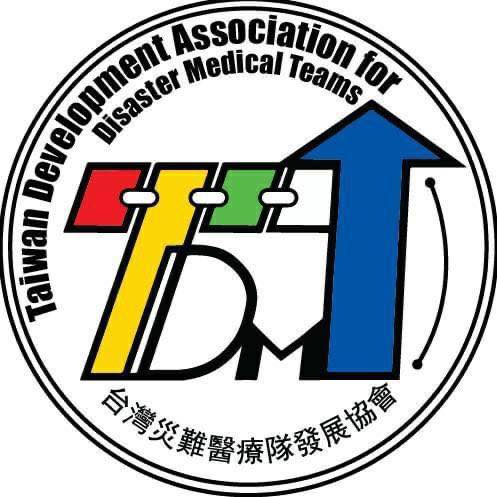
Taiwan Development Association for Disaster Medical Teams is an NGO in focused on disaster medical response. Its focuses on the following areas:
- Disaster prevention and Preparation (Disaster Command Structure and Mass Casualty Response Mechanism Counseling, Disaster Prevention Community Construction, Exercise Planning);
- Education and Training (Disaster Medical Care, Basic Life Support, Prehospital Emergency Medical Technician, Special Effects Makeup for Trauma, Tactical Medical);
- Disaster Response (Advance Team and Coordination Center, Medical Station setup, USAR Medical Team, DMAT Logistics Team).

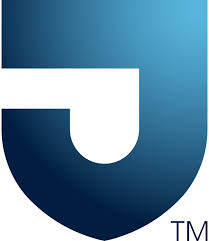
Jefferson's Master in Emergency & Disaster Management program prepares students to manage and develop the increasingly complex disaster management and preparedness requirements of the 21st century.
The Emergency & Disaster Management program is designed to educate medical, public safety, and defense professionals working in the public and private sectors to plan for, respond to, and mitigate the effects of natural and manmade disasters, including terrorism war, tsunamis, earthquakes, hurricanes, floods, wildfires, volcanoes, hazardous materials, and major power grid disruptions.
